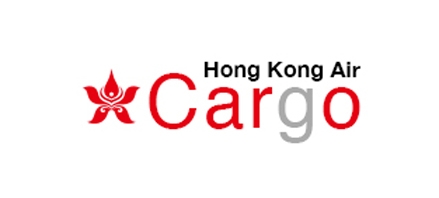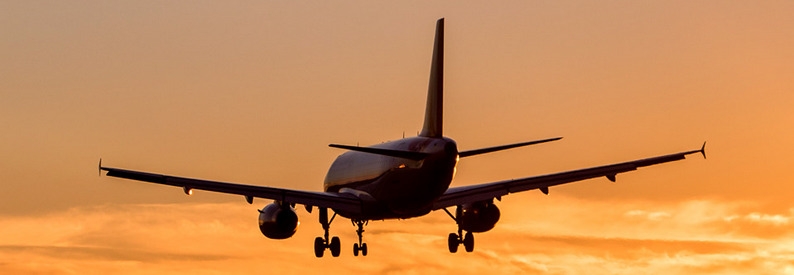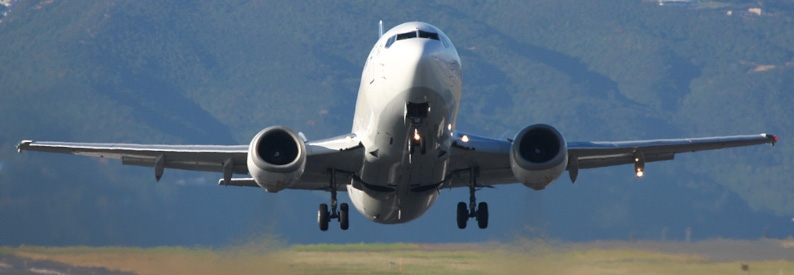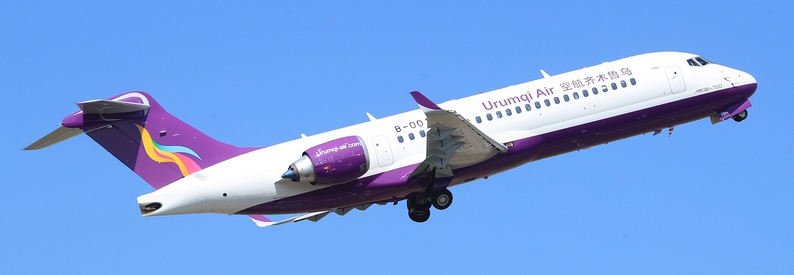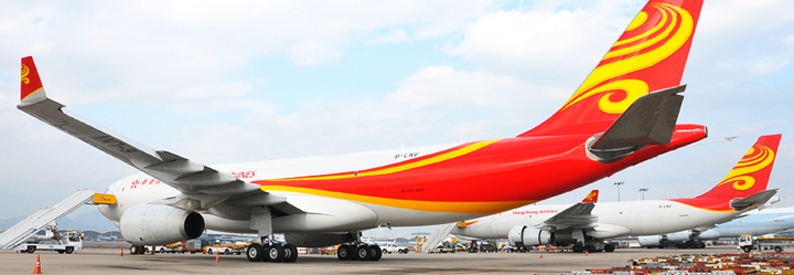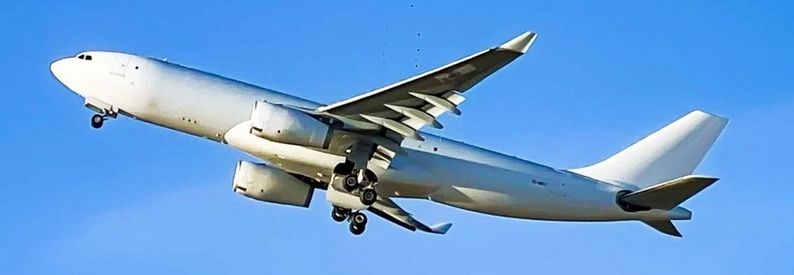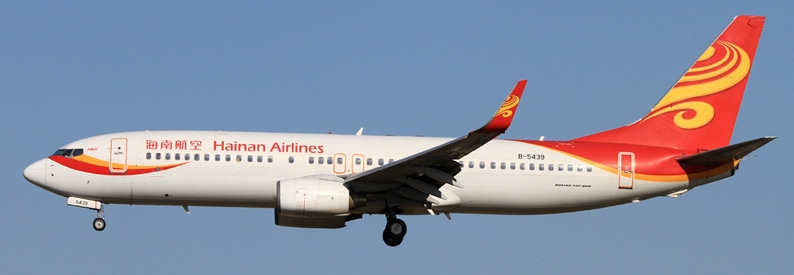Hong Kong Air Cargo (RH, Hong Kong International) is planning to more than double its fleet over the next few years and is assessing the viability of acquiring more A330Fs and introducing a new aircraft type. The growth is a response to burgeoning e-commerce cargo demand out of China and a pivot towards new business models, according to Hong Kong Air Cargo President Clifford Hung.
Speaking exclusively to ch-aviation in Hong Kong, Hung said the airline, a subsidiary of Hong Kong Airlines (HX, Hong Kong International), is evaluating various widebodies, including B777Fs, A350Fs, and B747-8Fs, and aims to increase its fleet capacity to 15 aircraft by 2027. Hong Kong Air Cargo presently operates five A330-200Fs that it inherited from its parent company, plus a single A330-300(P2F) (wet-leased from galistair (Malta) (8S, Malta International)).
The existing A330s are an optimum fit for existing regional routes in terms of range and costs. "The maximum payload is about 65 tonnes, which is optimal for regional flying," said Hung. "But when we fly longer routes, we need to look for other aircraft types."
Historically, Hong Kong Air Cargo has operated throughout Asia but has recently begun flying as far afield as Milan Malpensa, Liège, and London Stansted. "When we fly longer routes, we need to look for other more suitable aircraft types," Hung said. "We have started expanding our network into Europe and are looking for aircraft that will allow us to fly point-to-point instead of needing a tech stop. We see the need to upgrade the existing fleet, and we are looking at the options - B777Fs, A350Fs, and B747-8Fs."
"We plan to operate around 15 aircraft by 2027, but this will depend on the availability of aircraft. That doesn't mean that we need to get the physical aircraft under our air operator's certificate. We may look at ACMI or other models to make it happen. We can charter in an aircraft to fly for the company, and that capacity becomes our capacity."
Hung said using wet-leased aircraft has been an opportunity to test the market and bridge the demand gap before committing to acquiring their own aircraft. He says the existing wet-leased A330-300(P2F) is an example of this. While he declined to name the customer or the lease's length, the aircraft primarily flies between Hong Kong and Manila Ninoy Aquino International, with some occasional trips to Singapore Changi, Bangkok Suvarnabhumi, and Dhaka.
Hung says the aircraft types he wants do come onto the market, although securing them can be challenging. He says the B777F is a valid option if the airline can lock in a customer with freight demands that align with the type. "We are a cost-conscious carrier, so we need a reliable business partner to fill these planes," he said. "Right now, the Chinese e-commerce platforms supply the most of cargo in the market. We are always talking to these platforms to see what their requirements are, and provide the best solution for them."
Changing from scheduled flights to charter flights
The cargo market has changed as a result of Covid-19, Hung said, pointing to the growth of e-commerce out of China, other operators adding extra capacity during the pandemic, and the subsequent decrease in freight rates as three significant changes. These changes have motivated the airline to seek new customers in new markets and respond faster to changing demand.
"The cargo loads are not as high now as during Covid, but we are getting close," he said. "Before Covid, there was not much e-commerce, and what was there was very localised. But now, there's high e-commerce demand. But many of our competitors added extra freight capacity to their fleets during Covid, and now there is a lot of supply - that's driving down freight charges."
"This has required us to look beyond the Asia market. We've had to push out from the Asian market and look to Europe for opportunities. This is a good thing - it extends our current boundaries. Beyond our region, we now operate flights to Europe and the Middle East, and we are exploring the possibility of expanding our direct long-haul flights to North America and South America in the future. It's also why we need to look for new fleet additions after having the same fleet for five years."
Hung also says the changing cargo environment has resulted in Hong Kong Air Cargo looking at new business models. "One of the main changes to the previous business model is customers chartering aircraft to fly cargo to Europe," he said. Previously, the carrier focused on scheduled and regional charter flights. "Our scheduled flight to charter flight ratio has changed quite a lot. We are now working with long-term charter customers."
The President says the demand for charter flights is also becoming more stable than during Covid. "We used to sign contracts for a few flights, 10 - 15 maximum. Now, we have charterers who want to make long-term commitments of 12 months or more. These kinds of customers give us the confidence to start increasing our fleet. We can see the demand is growing and not limited to the European market."
Lack of manpower at some outstation airports an issue
Pilot shortages are a manageable issue for the carrier. "We can still usually recruit local pilots, either locally of overseas," he said. "We do roadshows, but we're small. The number of pilots we need to recruit is minimal compared to competitors. We operate the widebodies, and many pilots want to upgrade from narrowbodies to widebodies. We can offer them a platform to do that, which gives us an advantage."
However, Hung says workforce shortages at outstation airports are an issue. "The lack of airport services and groundhandlers in some airports is constraining our ability to expand. I tell them, 'I want to fly more flights into your airport,' and they say, 'I'm sorry, but I don't have the manpower to handle your aircraft.' This is not unique to us. It is happening across the industry, and our competitors face the same issue."
Hung adds that the airline isn't experiencing significant issues procuring spare parts, primarily because the aircraft type it operates is common, and there remains a good supply of parts.
Hong Kong Airport's cargo dominance secure
In terms of Hong Kong Airport's future as a dominant cargo hub, Hung said the reason the airport is the busiest cargo airport in the world is not because of price but because of service, robust logistics gateway and a geographical advantage. "That's where we stand out. Shippers and forwarders trust our capability to handle their cargo. That's our edge against competitor airlines and competitor airports."
"Our competitor airports such as Guangzhou and Shanghai Pudong have made major strides in their cargo handling abilities and are catching up. However, I still think Hong Kong will have the advantage. Hong Kong Airport has already developed freight transportation services with cities like Dongguan and implemented 100% X-ray screening and the security and other infrastructure really makes the airport stand out. That's the current situation. I cannot predict the future, and other airports will catch up eventually, but for now, we are just doing our best to help Hong Kong Airport maintain its current status."
- Type
- Base
- Aircraft
- Destinations
- Routes
- Daily Flights
